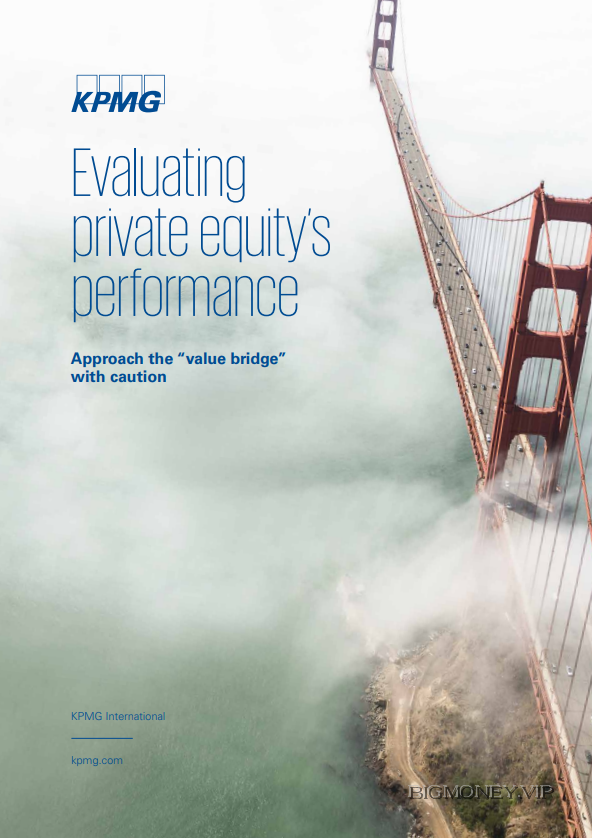Evaluating private equity’s performance: Approach the “value bridge” with caution

Introduction
Pension funds and other private equity
investors pay high fees to the private
equity firms that manage their money. (In
this article, “private equity” refers only to
buyouts.) How high? It is hard to capture
this in one figure, but four of the largest
private equity firms now file reports with the
US Securities and Exchange Commission
(SEC), which give some indication. Table
1 shows that, since 1976, fees and carried
interest have cost investors in these
managers’ funds between 7 percent and
14 percent per annum.
These four
managers have historically received
between one-quarter and one-third of the
gross returns that they generated.
People who work in private equity — both
fund managers and investors — say that
although these costs are substantial,
they represent good value, and not just
because investors receive high returns.
How the returns are generated is even
more important. Private equity sees itself
as a cut above the rest of the investment
pack. Where most investment managers
generate returns through some combination
of market timing and/or stock picking, private
equity says it does something harder and
more valuable: it ‘creates value,’ meaning it
makes the overall economic pie bigger than
it otherwise would be.
The term “value creation” lacks a clear
definition. Different people use it to mean
different things. What this article means
by private equity value creation is only
that part of an investment return that
comes from making the economic pie
bigger than it otherwise would be. This
embraces a full range of familiar private
equity strategies: for example, running a
single company more efficiently, growing
it faster, breaking up a conglomerate,
creating bigger groups through a buy-and-
build approach, and so on.
Private equity value creation in this sense
excludes several items that are regularly
referred to as “value creation. These
include a general market increase in
profits, market timing, stock picking and
financial engineering. The returns that
come from these sources are real enough.
Such returns will help pay for pensions
over the long term. But they do not come
from making the economic pie bigger than
it otherwise would be.
Private equity managers charge higher
fees than traditional investment managers.
To justify this, private equity managers
should be able to demonstrate that their
investments have outperformed. Merely
matching the performance of non-private
equity companies does not support
incremental fees. Therefore, this article
distinguishes private equity value creation
from value creation generally. The latter
comprises the overall change in value,
while the former reflects the incremental
performance relative to non-private
equity peers.
The two most-familiar measures of
return in private equity are the internal
rate of return (IRR) and the cash multiple.
These measures of overall return both
fail to distinguish between what would
have been achieved anyway and what
can be attributed to private equity. The
result is that neither the IRR nor the cash
multiple is very helpful when it comes to
measuring private equity’s value creation.
A private equity investment may generate
a high overall return (measured as IRR
or cash multiple) without involving any
value creation at all by private equity. If the
profit has come from a general increase
in profits, market timing or financial
engineering, then the economic pie is no
bigger as a result of this investment than it
would have been otherwise.
Private equity claims it creates value by
running companies better. That makes
it essential to measure accurately what
proportion of private equity returns does in
fact come from running companies better.
This article therefore looks behind headline
return figures such as IRR and cash multiple.
Two broad approaches to breaking down
the overall return in private equity are
available. The one that appears to be
most widely used is known as the “value
[creation] bridge.”
The mathematics and
the accounting in the value bridge are
accurate and it is useful in some ways.
However, it fails to give an accurate picture
of how much of private equity’s returns
come from running companies better.
Evaluating private equity’s performance: Approach the “value bridge” with caution




